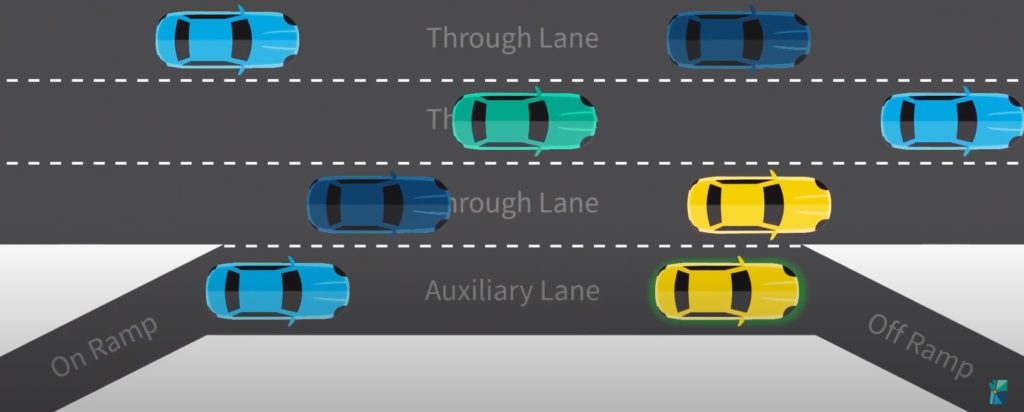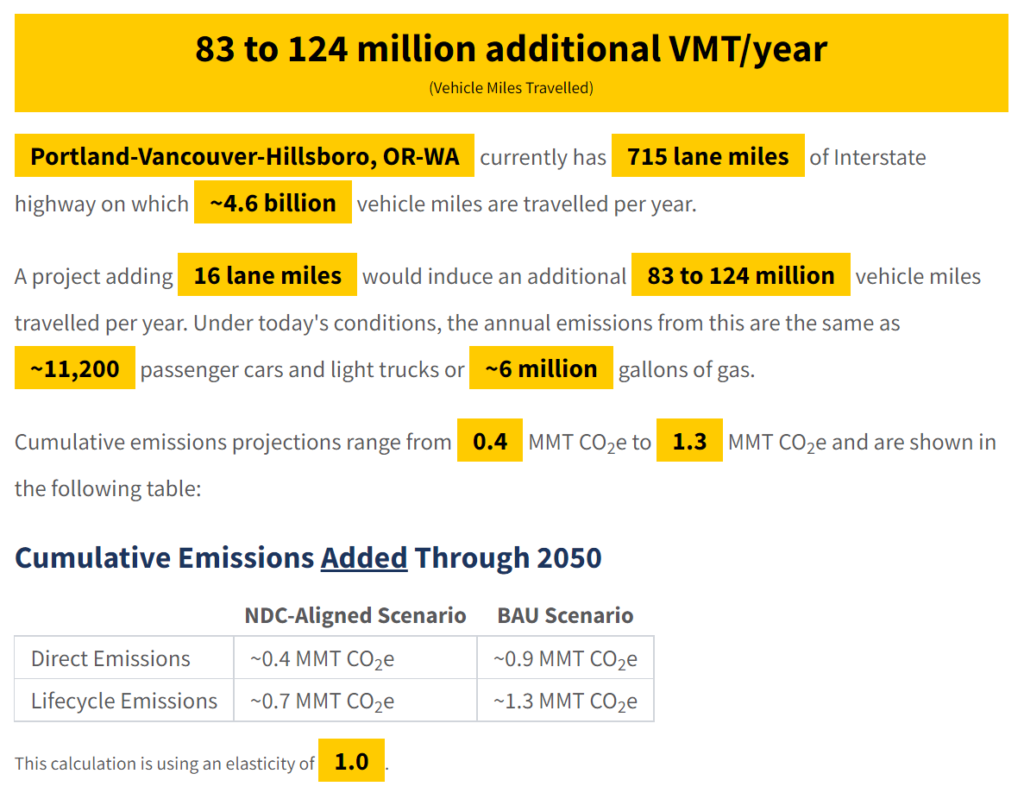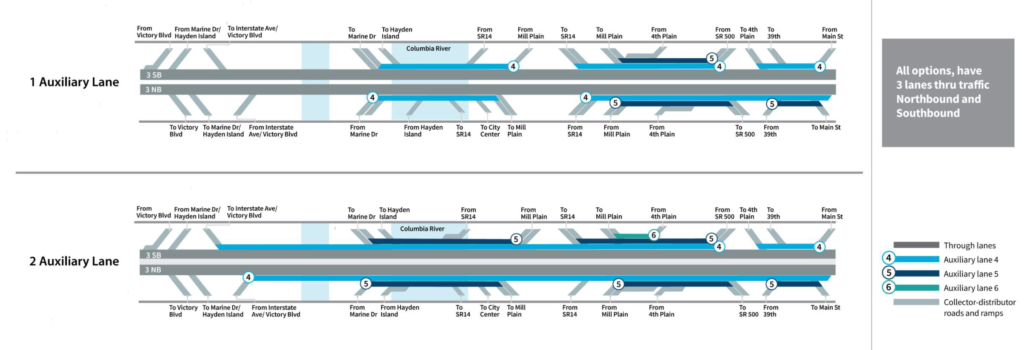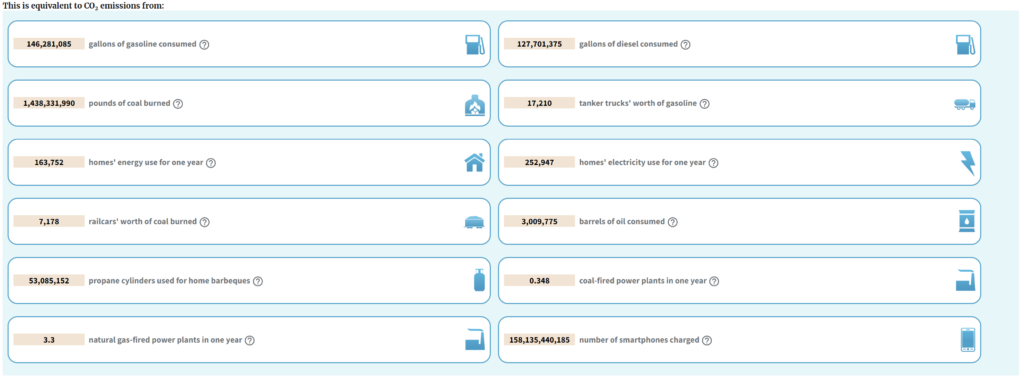The IBR project has produced a short video on how “auxiliary lanes”, sometimes also known as “ramp-to-ramp lanes”, work. They are at pains to distinguish them from “through lanes”.

That image comes from a nice animation (have we mentioned that the project has already spent over $7M on communications) that’s just a little bit misleading. That auxiliary lane looks like it’s about four car lengths long. In fact, the auxiliary lanes are miles long.
The project has offered up two options in the Locally Preferred Alternative discussion: 1 auxiliary lane or 2 auxiliary lanes , and wants the Executive Steering Group to pick by May 5th. That’s one or two auxiliary lanes in each direction, so including the three existing through lanes in each direction we’re talking about either an 8 lane or 10 lane bridge for the critical segment crossing the Columbia.
Project personnel have sometimes tried to portray auxiliary lanes as not being a freeway expansion. While auxiliary lanes may have safety benefits (typically reducing merging and weaving) we’re clear that they add vehicle capacity.
As a simple thought experiment you could easily get on at Marine Drive and off at SR14 and your trip would be entirely on an “auxiliary lane”. On today’s bridge you’d have to merge into a “through lane”, so this is definitely creating new capacity.
In the 2 auxiliary lane option, one of the lanes is four miles long, that’s approximately the entire length of the I-405 freeway in downtown Portland! It’s hard not to think of that as a through lane.
This will definitely allow more cars to fit onto the bridge, and if you believe in induced demand (we’ll cover that in another article) that means more cars will use the bridge, leading to more greenhouse gas emissions and impact on our climate.
As a cross check, the Rocky Mountain Institute has created the SHIFT calculator that estimates induced demand for added freeway lanes. It makes no distinction between auxiliary lanes and through lanes. If we plug in 16 additional lane miles (4 auxiliary lanes of 4 miles each), we get:

How do we make that impact easier to understand? The EPA has a calculator that shows us some equivalencies. Adding auxiliary lanes and expanding I-5 on and around the Bridge will add the equivalent of over 160,000 homes annual carbon emissions over its life, which is almost the equivalent of 1.5 million pounds of coal. While project leaders continue to argue that reducing congestion will by some miracle reduce carbon emissions, the science says auxiliary lanes, some of which could be as long as 4 miles, will only contribute to the climate crisis.
We also know from data released from IBR project staff in Mid April of 2022 that auxiliary lanes will only make a marginal improvement in traffic congestion, and in the long term any improvements will be wiped out as induced demand increases use of the roadway. This means some of the most expensive components of this bridge replacement project, roadway and interchange work related to expansion of auxiliary lanes, has a horrible cost trade off for our region.
At the core of our values is the belief that we need this project to move more people over the crossing, not more vehicles. As a result, we’re insisting that the segment crossing the river should have the same three lanes in each direction that it does today.

